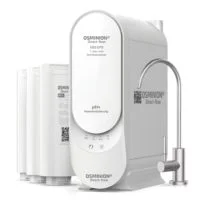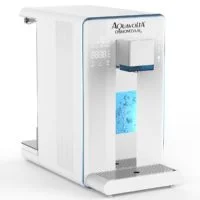reverse osmosis systems
Results 1 - 12 of 18 are displayed
Water filter with activated carbon, Tabletop filter, reverse osmosis systems
Original price was: €731,09563,03 €Current price is: €563,03.excl. Shipping Rate
Results 1 - 12 of 18 are displayed
Obtain drinking water using reverse osmosis systems
Reverse osmosis systems use the natural osmosis principle to produce drinking water that is almost free of pollutants. Compact systems are now easily used in private households.
Obtaining clean drinking water is essential to our survival as humans. For example, reverse osmosis systems are primarily used to make seawater drinkable. These work according to a natural principle without chemical additives and produce high-quality reverse osmosis water.
How a reverse osmosis system works
In order to understand how an osmosis system works, the natural process of osmosis must first be explained: If two liquids with different concentrations of dissolved substances meet, the aim is to balance these concentrations. The movement of the dissolved substances from one liquid to the other creates pressure.
Video: Differences | Water filter & reverse osmosis system
In a reverse osmosis system, two areas are separated by a semi-permeable membrane that allows water molecules to pass through, but not the substances dissolved in the water. By adding water from one side of the system and building up an artificial pressure* that exceeds the natural osmosis pressure, water molecules are forced through the membrane to the other side, while the dissolved substances remain behind.
*In the case of a mobile system, this pressure arises from the water pipe.
The osmosis water generated in this way is freed from a large part of the harmful pollutants. This water treatment process is usually carried out using additional methods Water filter systems supplemented - the combination of reverse osmosis and filter additives ensures an optimal result.
















